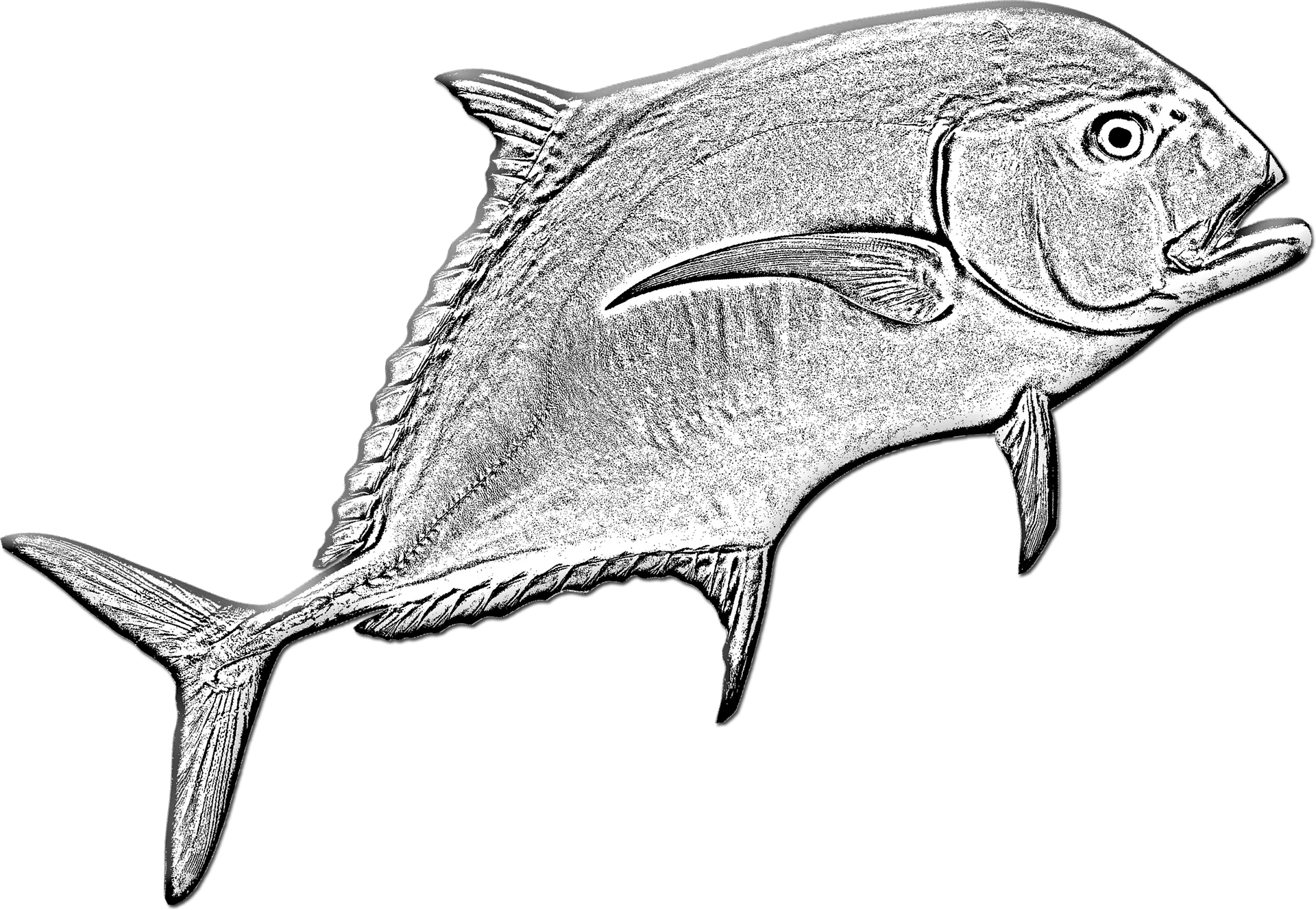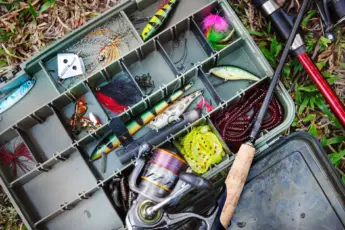The African Pompano, otherwise known as a Cuban Jack, Threadfish, or threadfin, is a member of the jack family. The jacks include 150 variations of the species. Anglers target the fish in offshore waters. Anglers infrequently catch threadfin. Threadfish however are not an endangered species. Here is what you need to know about the African Pompano.
What Does African Pompano Look Like
While jacks possess similarities, the African Pompano is easily distinguishable. The fish have a flattened appearance with a blunt head. The sides of the fish are silver, while the top is blue to green. A distinct lateral line runs from head to tail.
Young African Pompano fish acquires the name threadfish and threadfin because of the streamer-like rays on the dorsal and anal fin. As the fish ages, the streamers fall away.
Generally speaking, to determine the difference between pompano and jack, the jack’s fins are pointed towards the ends compared to rounded on a pompano.
How Big Does A African Pompano Get
The question is often asked, how big do pompano get? The Cuban Jack grows between fifty and sixty inches in length. In regards to weight, the average fish ranges between fifteen and thirty pounds. However, it is not uncommon to stumble across fish exceeding forty-five pounds.
Due to the fish’s size and strength, anglers must utilize light to medium weight ocean and spinning tackle. Do not lock the drag to or else you put yourself at risk of breaking the fish off. A fifty pound cuban jack will snap the line of a light weight spinning combo with ease if too much pressure is applied.
Where Are African Pompano
Threadfish distribution is extensive. On the east coast of the United States, the fish ranges between Florida and Nova Scotia, Canada.
Cuban Jack is targeted in the southern states between North Carolina and Florida despite the lengthy distribution along the Atlantic. African pompano Florida is some of the most prevalent.
How Do You Catch An African Pompano
Cuban Jacks congregate in schools in the vicinity of deepwater drop-offs and wrecks. Anchoring and drift fishing is the most effective method.
If you’re wondering how to catch African Pompano, drop lead weights and hooks tipped with live or dead pilchards, pinfish, mullet, or goggle eyes when the boat is positioned above an underwater structure. To avoid becoming snagged, present the baits above wrecks.
Remember, threadfin is a rare catch. Offshore fishermen infrequently target the species. Anglers are more likely to catch grouper, snapper, and kingfish when dropping baits over structures. However, it is a welcome surprise and be sure to take a photo of your catch.
When hooked, the fish fights in a circular motion. Pound for pound, the Cuban Jack is a stout fighter, particularly on light to medium ocean gear.
Are African Pompano Rare
Despite the limited number of catches, the schooling fish is not rare. Cuban jacks are not listed as endangered or threatened species. The threadfish is a picky eater compared to other members of the jack family and, most importantly, the amberjack.
The vast majority of cuban jacks are hooked as by-catch when targeting other species, including mackerel, snapper, or grouper. However, the catch comes as a pleasant surprise because of its ability to fight and picture-taking qualities. A photo lasts a lifetime. Boast your unlikely lunker to friends and family.
Is African Pompano Good To Eat
The question is often asked, are african pompano good to eat? To answer is African pompano good to eat, threadfish makes excellent table fare.
If you’re wondering what does pompano taste like? To describe African Pompano taste, the fillets are mild, buttery, and firm. Due to its taste and texture, preparation methods are highly versatile.
The most popular cooking method is grilling. Cuban Jack fillets are thick, which prevents the center from becoming dry when cooking over flames. Season the fish with your favorite species and cook until the fish flakes with a fork. Serve the cooked fish with a side of coleslaw and tartar sauce for dipping.
Try Your Luck At Catching An African Pompano
Even though threadfish are infrequently caught, it may only take one trip to the offshore waters of North Carolina, South Carolina, or Georgia for the opportunity to land the species. Saltwater licenses are required when fishing from a personally owned boat. The vast majority of charters include anglers under an umbrella license. The likelihood of connecting with an threadfin increases every time you drop a bait over a wreck or drop off.







